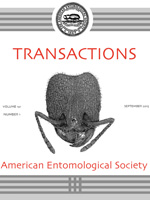The South American big-headed ant Pheidole obscurithorax was first found in North America in Mobile, Alabama in 1949. Since then, this species has also been recorded in Florida, Georgia, Mississippi, and Texas. We compiled and mapped published and unpublished specimen records of P. obscurithorax from >170 sites in South America and the US to evaluate the current geographic range of this species and its possible future spread. We documented the earliest known records for nine geographic areas (South American countries and US states). Site records of P. obscurithorax ranged 27.5 degrees of latitude (from 6.7°S to 34.2°S) in South America, and 3.5 degrees of latitude (from 28.0°N to 31.5°N) in North America. It may be that the North American populations of P. obscurithorax have a fairly narrow range of climatic tolerances. Earlier genetic analyses of native and exotic populations of P. obscurithorax found that the North America populations appear to originate from a single introduction from a population most closely related to native study populations from a stretch along the Paraná River in Argentina from Resistencia (27.5°S) to Santa Fe (31.6°S). This latitudinal range matches the current latitudinal range of P. obscurithorax in North America. Alternatively, the much greater latitudinal range of P. obscurithorax in South America suggests that exotic populations of P. obscurithorax may have potential for much additional expansion in North America and beyond. In South America, P. obscurithorax has a similar native range as the invasive fire ant Solenopsis invicta. In the North America, exotic populations of P. obscurithorax may spread like S. invicta has, across the southeast of the US and into the West Indies.
How to translate text using browser tools
7 September 2015
Geographic Spread of Pheidole obscurithorax (Hymenoptera: Formicidae)
James K. Wetterer,
Joe A. Macgown,
Luis A. Calcaterra
ACCESS THE FULL ARTICLE
biogeography
biological invasion
exotic range
invasive species
native range





